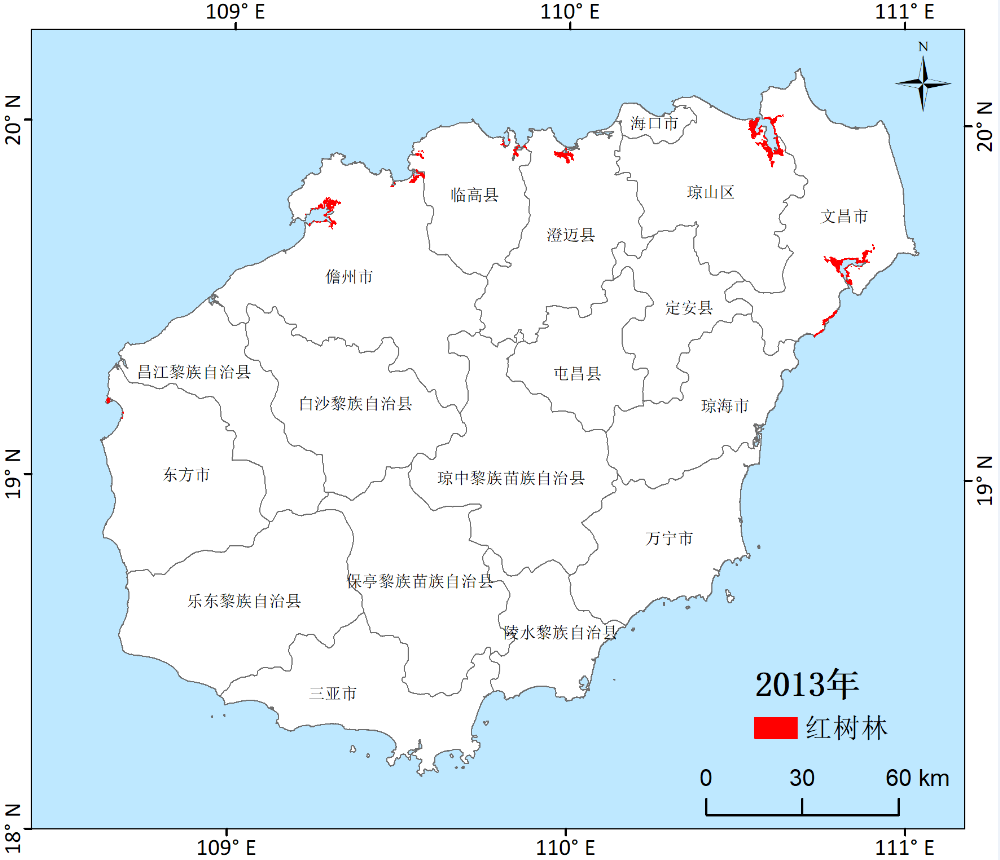Contact Information

30-m datasets of mangrove forest changes in Hainan Island from 1987 to 2020

Dataset Overview
Distributed in the coastal wetlands of tropical and subtropical regions throughout the world, mangrove forests provide important ecological and eco-economical services such as coastal erosion prevention, water purification, nursery habitats for marine fish and shrimp breeding, provision of building materials and medicinal ingredients, and tourist attraction. A dataset of mangrove forests changes from 1987 to 2017 in Hainan Island was developed using Landsat TM/OLI images obtained in 1987, 1993, 1998, 2003, 2007, 2013 and 2017. This dataset was compiled through a support vector machine (SVM) classification method based on ground survey data. It can be used to understand the status and dynamics of mangrove forests, and to support decision-making concerning the restoration, protection and management of mangrove wetland ecosystem. Further, the dataset provides basic data for ecological environment monitoring in Hainan Province.

Dataset Details
Spatial Resolution: 30m
Time Resolution: 5-7 years
Product Number: XDA19030105_009
Create Institution: International Research Center of Big Data for Sustainable Development Goals
Created By: Liao Jingjuan
Creation Date: 2022-12-13T08:50:13.247Z
File Size: 1
Data Format: shape
Type Of Data: Vector
Data Label:

Data Citation
Liao Jingjuan. 30-m datasets of mangrove forest changes in Hainan Island from 1987 to 2020. 2022

Data Licence Agreement
Users of this product shall clearly indicate the source as " 30-m datasets of mangrove forest changes in Hainan Island from 1987 to 2020" in all forms of research output, including, but not limited to, published and unpublished papers, theses, manuscripts, books, reports, data products, and other academic output. The data producers are not responsible for any losses caused by the use of the data. The boundaries and marks used in the maps do not represent any official endorsement by or opinion of the data producers.

Funded Projects
Supported by Hainan Provincial Department of Science and Technology under Grant No. ZDKJ2019006 and the "Strategic Priority Research Program" of the Chinese Academy of Science, Grant No. XDA19030105
